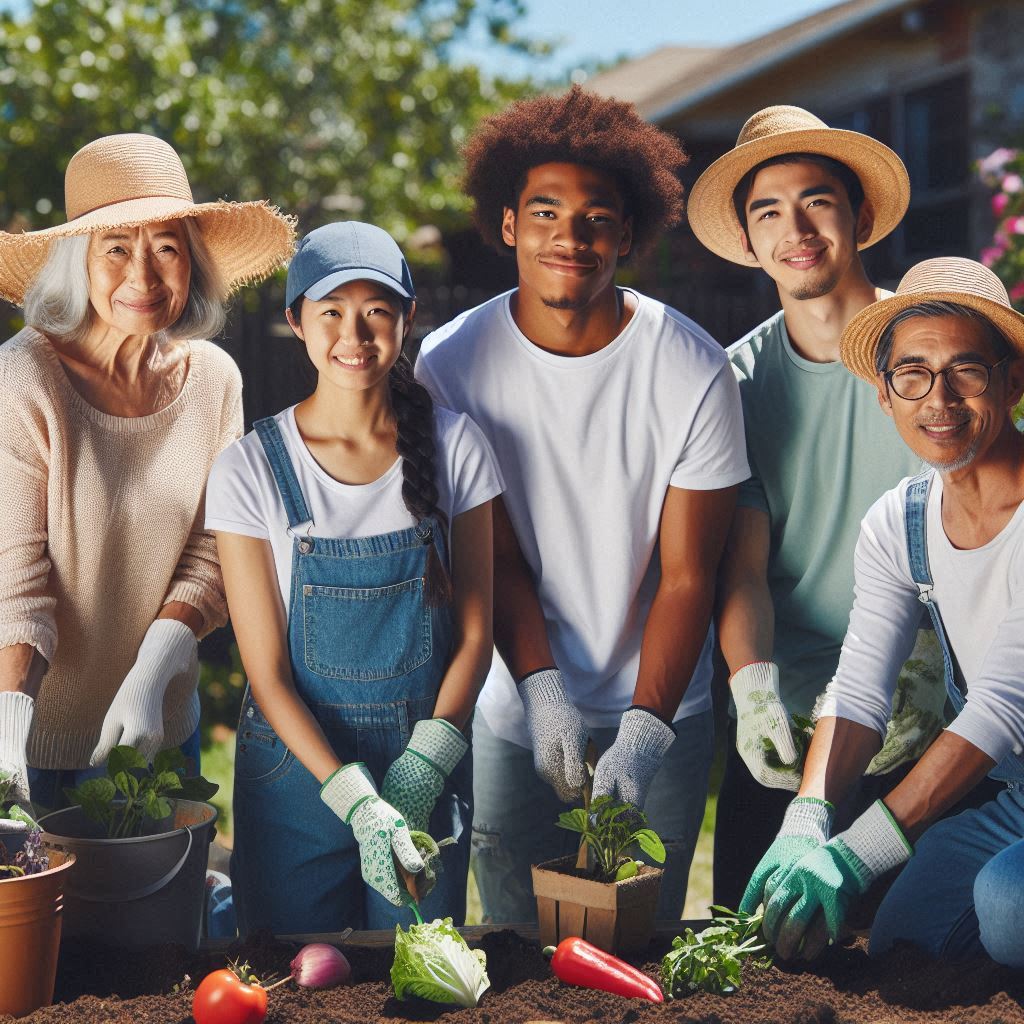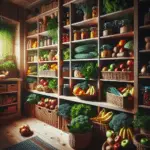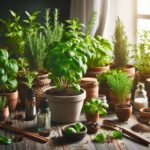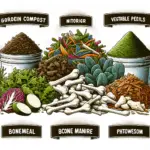Understanding the Harvesting Process
Harvesting vegetables is a crucial step in reaping the rewards of your hard work in the garden. Understanding the process is key to ensuring your vegetables are picked at the peak of perfection. Let’s delve into the intricacies of vegetable harvesting.
The Timing Is Everything
**Harvesting vegetables at the right time is essential for flavor and nutrition.** Each vegetable has its own cues to indicate when it’s ready for picking. Factors such as color, size, and texture play a significant role in determining the readiness for harvest.
Gentle Handling for Optimal Quality
**Vegetables are delicate and can easily be bruised or damaged during the harvesting process.** It’s important to handle them with care to maintain their quality. Avoid rough handling and use sharp tools to prevent unnecessary damage.
Choosing the Right Tools
**Having the proper tools for harvesting can make the process much more efficient.** Select tools such as pruning shears for delicate crops like herbs and tomatoes, while opting for secateurs or a sharp knife for tougher vegetables like pumpkins or squash.
Harvesting Techniques
- **For leafy greens, such as lettuce or spinach, use a cut-and-come-again approach by harvesting outer leaves, allowing the plant to continue growing.**
- **Root vegetables like carrots or beets should be gently loosened from the soil before pulling them out to prevent breakage.**
- **Vining crops such as cucumbers or beans need to be harvested regularly to encourage continuous production.**
Storing Your Harvest
**After harvesting, it’s crucial to store your vegetables properly to maintain freshness.** Some vegetables thrive in the refrigerator, while others prefer a cool, dark place. Understanding the storage needs of each vegetable will extend its shelf life.
The Importance of Harvesting Vegetables at the Right Time
Harvesting vegetables at the optimal time is a critical aspect of gardening that can significantly impact the quality and taste of your produce. Knowing when and how to harvest different types of vegetables ensures that you get the most out of your gardening efforts. Let’s delve into why timing is crucial when it comes to harvesting vegetables.
Enhanced Flavor
Harvesting vegetables at the right time allows them to develop their full flavor potential. Timing is key as flavors can change rapidly, becoming bland or overly ripe if left on the plant for too long.
Maximum Nutrition
Harvesting vegetables at their peak ensures that you capture them when they are packed with the highest levels of essential nutrients. Freshly harvested vegetables are not only more nutritious but also offer a more enjoyable eating experience.
Extended Yield
By harvesting vegetables promptly, you encourage the plants to continue producing more crops. Regularly harvesting ripe vegetables stimulates further growth and extends the overall yield throughout the growing season.
Preventing Overripeness
Leaving vegetables on the plant past their prime can lead to overripeness, affecting their texture, taste, and overall quality. To prevent this, it is crucial to harvest in a timely manner to maintain the best possible taste and texture.
Optimal Storage
Harvesting vegetables at the correct time also plays a significant role in storage and shelf life. Produce that is harvested at its peak tends to store better and stay fresh longer, allowing you to enjoy your homegrown vegetables for an extended period.
Factors to consider before harvesting
Timing is crucial
Ensure you harvest at the right time to achieve the best taste and texture. Check the maturity indicators of each vegetable to determine the optimal harvesting time.
Weather conditions
Consider the weather forecast before harvesting. Moisture levels and temperature can greatly impact the quality of your vegetables. Harvest when the weather is dry to prevent diseases and rot.
Tools and equipment
Make sure you have the appropriate tools and containers ready for harvesting. Sharp shears, baskets, and gloves may be necessary depending on the type of vegetables you are harvesting.
Storage arrangements
Plan for storage before you start harvesting. Have a clean, dry place ready to store your vegetables immediately after harvest to maintain freshness and prevent spoilage.
Inspect for readiness
Before harvesting, inspect each vegetable carefully. Look for signs of maturity such as color, size, and firmness. Avoid harvesting vegetables that are under or overripe.
Harvesting techniques
Use proper harvesting techniques to avoid damage to the plant and ensure a successful harvest. Cut or pull vegetables carefully to prevent bruising or breaking.
Tools needed for efficient vegetable harvesting
Essential Tools
Hand Pruners: Sharp pruners are crucial for harvesting vegetables without damaging the plants.
Gardening Gloves: Protect your hands from thorns, dirt, and scratches while harvesting.
Harvesting Knife: Use a sharp knife to carefully cut vegetables from the plant for a clean harvest.
Convenient Tools
- Garden Scissors: Ideal for harvesting delicate herbs and greens.
- Harvesting Apron: Keep your harvested vegetables handy and organized as you work.
Specialized Tools
“Having the right tools at hand can make vegetable harvesting a breeze.”
Garden Trowel: Useful for digging up root vegetables like carrots and potatoes.
Harvest Basket: Carry your fresh produce efficiently without risking damage.
Maintenance Tools
Sharpening Stone: Regularly sharpen your cutting tools to ensure clean cuts and efficient harvesting. Cleaning Brush: Keep your tools clean to prevent the spread of diseases among plants.
Proper Techniques for Different Vegetables
When it comes to harvesting vegetables, understanding the unique characteristics of each type is essential to ensure a bountiful yield. Here are some proper techniques for harvesting different vegetables:
Cucumbers:
- Harvesting: Pick cucumbers when they are firm and bright in color. Use a sharp knife or shears to cut the stem about 1/4 inch above the cucumber.
- Timing: Harvest cucumbers regularly to promote continuous production throughout the growing season.
Tomatoes:
- Ripeness: Tomatoes should be harvested when they reach their mature color and are slightly soft to the touch.
- Method: Gently twist the tomato to detach it from the vine, taking care not to damage other fruits.
Carrots:
“Harvest your carrots when they have reached the desired size, as leaving them in the ground too long can result in a woody texture.”
Spinach:
- Leaf Harvest: Pick outer leaves first, allowing the inner leaves to continue growing for future harvests.
- Timing: Harvest spinach early in the morning for the best flavor and nutritional content.
Peppers:
| Pepper Type | Harvesting Technique |
|---|---|
| Bell Peppers | Use a sharp knife to cut the stem about 1 inch above the top of the pepper. |
| Jalapeños | Gently twist the pepper to detach it from the plant. |
Zucchini:
Size: Harvest zucchinis when they are 6 to 8 inches long for optimal flavor and texture. Frequency: Check plants daily as zucchinis can grow quickly and become oversized if not harvested promptly.
Harvesting Leafy Greens such as Lettuce and Spinach
When it comes to harvesting leafy greens like lettuce and spinach, a delicate touch and attention to detail are key to ensuring a bountiful yield of fresh, crisp greens. Whether you are a seasoned gardener or just starting out, these tips will help you harvest your leafy greens with care and precision.
Timing is Everything
Leafy greens are best harvested when they are young and tender, typically before they reach full maturity. This ensures optimal flavor and texture, making your salads and dishes truly delightful. Harvest in the morning when the leaves are crisp and full of moisture.
Harvesting Lettuce
When harvesting lettuce, use a sharp knife or scissors to cut the leaves right above the soil level. Avoid pulling the entire plant out of the ground, as this can disturb the root system and reduce future yields. Harvest outer leaves first, allowing the inner leaves to continue growing.
Harvesting Spinach
Spinach is best harvested by cutting the outer leaves first, leaving the smaller inner leaves to grow. Cut the leaves at the base, taking care not to damage the central growing point. Regular harvesting encourages the plant to produce more leaves, giving you a continuous harvest.
Handling and Storage
- Handle with Care: Avoid bruising or crushing the leaves during harvest as this can lead to wilting and decay.
- Wash and Dry: Gently wash the harvested greens in cold water to remove any dirt or debris. Pat them dry with a clean towel or spin them in a salad spinner.
- Storage Tips: Store leafy greens in a breathable container lined with a paper towel to absorb excess moisture. Keep them in the refrigerator for maximum freshness.
“Harvesting leafy greens is a rewarding experience that connects us to the earth and the nourishing power of fresh produce.”
Picking Root Vegetables like Carrots and Radishes
1. Timing is Key
When it comes to picking root vegetables such as carrots and radishes, timing is crucial. Harvest carrots when the tops are 1 inch in diameter, and radishes when they are of the desired size, usually around 1 inch in diameter as well.
2. Gentle Harvesting
Root vegetables can be delicate, so handle them with care to prevent damage. For carrots, gently loosen the soil and pull them out with a steady yet light tug. Radishes can often be harvested by hand without the need for tools.
3. Proper Technique
When picking carrots, grasp the green tops close to the base of the carrot and pull gently upwards while supporting the root. For radishes, carefully pull them out by grasping the green top and easing them out of the soil.
4. Storage Tips
- Carrots can be stored in the refrigerator in a plastic bag for up to several weeks, especially if unwashed.
- Radishes should have their tops removed before storing in the refrigerator. Place them in a perforated plastic bag to maintain freshness.
5. Enjoying the Harvest
There is a special satisfaction in harvesting your own root vegetables and enjoying the fresh flavors they bring to your meals.
Harvesting Vine Vegetables Such as Tomatoes and Cucumbers
Timing Is Key
Harvest your vine vegetables at the right time to ensure optimal flavor and texture. For tomatoes, they should be firm, fully colored, and show a slight give when gently squeezed. Cucumbers are best harvested when they are dark green, firm, and about 6-8 inches long.
Tools You’ll Need
- Pruning Shears: Use clean and sharp pruning shears to cut the stems without damaging the plant.
- Basket: Have a basket or container on hand to collect your harvested vegetables gently.
- Gloves: Protect your hands with gloves, especially when handling prickly cucumber vines.
Harvesting Techniques
When harvesting tomatoes or cucumbers, use a gentle twisting motion to separate the fruit from the vine. Avoid pulling, as it can damage the plant. Support the vine with one hand while picking the vegetables with the other to prevent unnecessary stress on the plant.
Storage Tips
After harvesting, store your tomatoes at room temperature away from direct sunlight to allow them to ripen fully. Cucumbers, on the other hand, should be stored in the refrigerator crisper drawer to maintain their freshness and crispness.
Quote of Wisdom
“A successful harvest is a culmination of patience, precision, and respect for nature’s bounty.” – Unknown
Maximizing Yield and Quality
Choosing the Right Vegetables
When aiming to maximize yield and quality, selecting the right vegetables is crucial. Opt for varieties that are known to thrive in your specific climate and soil conditions.
Proper Plant Spacing
Ensure adequate spacing between plants to allow for proper growth and development. Crowded plants can lead to competition for nutrients and sunlight, ultimately affecting yield and quality.
Regular Watering and Feeding
Consistent watering and feeding are essential for the health and productivity of your vegetable garden. Be mindful of the specific water and nutrient needs of each plant to prevent issues such as nutrient deficiencies or overwatering.
Weed Control
Effective weed control is necessary to prevent weeds from competing with your vegetables for resources. Consider employing mulching techniques or hand-weeding to keep weeds at bay.
Pest and Disease Management
Implement preventative measures to safeguard your crops against common pests and diseases. Regularly inspect your plants for any signs of infestation or disease and take appropriate action promptly.
Harvesting at the Right Time
Timing is key when it comes to harvesting vegetables for optimal yield and quality. Harvesting too early or too late can impact the taste and nutritional value of your produce.
Post-Harvest Handling
Pay attention to proper post-harvest handling to preserve the quality of your vegetables. Store them under the right conditions to maintain freshness and flavor for longer periods.
Tips for Ensuring a Bountiful Harvest
1. Understand Your Plants
Each vegetable has unique requirements for growth. Understanding the specific needs of your plants is crucial for a successful harvest. Research the optimal growing conditions, including sunlight, water, and soil pH, for each type of vegetable in your garden.
2. Start with Quality Seeds
Invest in high-quality seeds from reputable suppliers to ensure strong and healthy plants. Check the seed packets for information on planting depth, spacing, and any special instructions for the best results.
3. Practice Crop Rotation
Crop rotation is essential for maintaining soil fertility and reducing the risk of pests and diseases. Rotate the location of your vegetable crops each year to prevent depletion of specific nutrients in the soil.
4. Provide Adequate Watering
Consistent and adequate watering is crucial for the development of vegetables. Be mindful of each plant’s watering needs and adjust based on the weather conditions. Consider using a drip irrigation system for efficient watering.
5. Mulch & Weed Regularly
Mulching helps retain moisture in the soil, suppresses weeds, and maintains a more stable soil temperature. Regularly weeding your garden prevents competition for nutrients and resources, ensuring that your vegetables thrive.
6. Monitor for Pests and Diseases
Keep a close eye on your plants for any signs of pest infestations or diseases. Early detection is key to preventing widespread damage. Consider using natural predators or organic pesticides to manage pest populations.
How to Maintain the Freshness and Quality of Harvested Vegetables
Harvesting your vegetables is a culmination of hard work and dedication. To ensure that all your efforts are preserved, it is essential to maintain the freshness and quality of the harvested produce. Here are some expert tips to help you keep your vegetables at their best:
Proper Storage Techniques
After harvesting, it is crucial to store your vegetables correctly to maintain their freshness. Consider the following:
- Temperature Control: Store vegetables at the optimal temperature to prevent spoilage.
- Humidity Levels: Maintain the right humidity levels to prevent wilting or mold growth.
- Air Circulation: Ensure good air circulation around the stored vegetables to prevent rot.
Handling Tips
How you handle your harvested vegetables can also impact their quality:
- Gentle Washing: Wash vegetables gently before storing to remove dirt, but avoid excess water exposure to prevent spoilage.
- Avoid Bruising: Handle vegetables with care to prevent bruising, which can lead to quicker deterioration.
- Remove Excess Foliage: Trim excess leaves and stems before storage to prolong the freshness of the vegetables.
Utilizing Preservation Methods
Preserving your harvested vegetables can extend their shelf life:
- Canning: Consider canning your vegetables to enjoy them well beyond the harvest season.
- Freezing: Freezing vegetables can help maintain their texture and nutrients for future use.
- Drying: Drying certain vegetables can be a convenient way to preserve them for later use in cooking.

By implementing these techniques and practices, you can ensure that your harvested vegetables remain fresh and of the highest quality, allowing you to enjoy the fruits of your labor for an extended period.
Post-Harvest Handling
After the vegetables have been harvested, proper post-harvest handling is crucial to maintain their quality and extend their shelf life. Follow these guidelines to ensure your harvested vegetables remain fresh and nutritious:
Proper Storage
- Temperature Control: Store vegetables at the appropriate temperature to prevent spoilage. Different vegetables have different temperature requirements, so refer to specific guidelines for each type.
- Avoid Moisture: Excess moisture can lead to mold and spoilage. Ensure the storage area is dry and well-ventilated.
- Avoid Ethylene: Some vegetables produce ethylene gas, which can accelerate ripening and spoilage in others. Keep ethylene-producing and ethylene-sensitive vegetables separated during storage.
Handling Techniques
- Gentle Handling: Handle vegetables with care to avoid bruising and damage, which can accelerate spoilage.
- Cleaning: Before storage, gently clean vegetables to remove dirt and debris. Avoid washing them unless necessary, as excess moisture can promote spoilage.
- Trimming and Sorting: Inspect harvested vegetables for any signs of damage or rot. Trim off damaged parts and separate vegetables that are ripe to prevent them from spoiling others.
Packaging and Transportation
- Appropriate Packaging: Choose packaging materials that allow for proper ventilation to prevent moisture buildup. Use containers suitable for the vegetable type to maintain freshness.
- Transportation: During transportation, handle vegetables gently to avoid damage. Keep the temperature consistent to prevent temperature shocks that can affect vegetable quality.
Remember, proper post-harvest handling practices are essential to maximize the quality and shelf life of your harvested vegetables. By following these guidelines, you can enjoy fresh and delicious produce for longer periods.
Cleaning and Storing Freshly Harvested Vegetables
Once you have harvested your precious vegetables, it is essential to handle them with care to maintain their freshness and quality. Proper cleaning and storage techniques can significantly extend the shelf life of your produce, allowing you to enjoy the fruits of your labor for a longer time. Here are some guidelines to help you preserve the flavors and nutrients of your freshly harvested vegetables:
Cleaning Techniques
- Remove Excess Soil: Gently brush off any visible dirt or soil from the vegetables using a soft brush or cloth.
- Rinse Thoroughly: Rinse the vegetables under cool running water to remove any remaining dirt or debris. You can use a colander for smaller vegetables to ensure thorough cleaning.
- Avoid Soaking: Avoid soaking vegetables in water for an extended period as it can lead to loss of water-soluble nutrients.
- Use Vinegar Solution: For leafy greens and delicate vegetables, you can create a solution of water and vinegar (1:3 ratio) to remove pesticides and bacteria.
Storing Methods
Proper storage is crucial to maintain the freshness and flavor of your harvested vegetables. Consider the following storage methods based on the type of vegetables:
Root Vegetables
- Remove Tops: Remove the tops of root vegetables like carrots and beets to prevent moisture loss.
- Wrap in Paper Towels: Wrap the vegetables in paper towels before placing them in perforated plastic bags in the crisper drawer of the refrigerator.
Leafy Greens
- Remove Excess Moisture: Gently pat dry leafy greens like lettuce and spinach before storing.
- Store in Airtight Containers: Place the greens in airtight containers or resealable bags with a paper towel to absorb excess moisture.
Tomatoes
- Store at Room Temperature: Store ripe tomatoes at room temperature away from direct sunlight to preserve their flavor and texture.
- Avoid Refrigeration: Refrigeration can cause tomatoes to lose their flavor and become mushy.
General Tips
- Avoid Mixing: Store vegetables separately to prevent them from affecting each other’s ripening process.
- Check Regularly: Regularly check stored vegetables for any signs of spoilage and promptly remove any damaged ones to prevent further contamination.
Creative Ways to Use Excess Produce
When your vegetable garden is overflowing with fresh produce, it’s time to get creative and find ways to utilize every last bit. Here are some inventive ideas to make the most of your excess harvest:
Preserve for Later
- Canning: Preserve your vegetables by canning them in jars with vinegar or brine for long-term storage.
- Freezing: Blanch and freeze vegetables like peas, corn, and beans to enjoy their freshness throughout the year.
- Drying: Dehydrate vegetables such as tomatoes, peppers, or herbs to create delicious dried snacks or seasonings.
Creative Culinary Creations
- Vegetable Pickles: Experiment with pickling your excess vegetables to add tangy flavors to your meals.
- Soups and Stews: Use a variety of vegetables to create hearty soups and stews that can be frozen for later consumption.
- Veggie Stir-Fry: Whip up colorful and nutritious stir-fries using an assortment of fresh vegetables.
Share the Bounty
“One’s bounty is meant to be shared to spread the joy of freshness and flavor.” – Unknown
Don’t let your excess produce go to waste; share it with friends, family, or local community members who will appreciate the gift of homegrown vegetables.
Feed the Soil
Turn your excess produce into compost to enrich your garden’s soil for future plantings. This sustainable approach closes the loop of nature’s abundance.
Embrace these resourceful and community-minded ways to handle excess produce from your garden, ensuring that every vegetable is valued and enjoyed.
Troubleshooting Common Harvesting Issues
1. Addressing Pest Problems
If you notice pests damaging your vegetable crops, take immediate action to prevent further harm.
- Organic solutions: Consider using natural pest control methods such as neem oil or introducing beneficial insects.
- Cultural practices: Rotate crops yearly to reduce pest populations and avoid planting susceptible crops in the same area.
2. Dealing with Overripe Vegetables
Harvesting vegetables at the right time is crucial to their flavor and nutritional content.
- Signs of overripeness: Check for dull appearance, mushy texture, or seeds that are too large.
- Solution: Regularly inspect your plants and harvest vegetables as soon as they reach maturity.
3. Handling Underdeveloped Produce
Encountering underdeveloped vegetables can be frustrating, but there are ways to address this issue.
- Possible causes: Inadequate sunlight, poor soil quality, or overcrowding can lead to stunted growth.
- Remedies: Ensure proper spacing between plants, provide sufficient nutrients, and protect from extreme weather conditions.
4. Managing Timing Challenges
Timing is key when it comes to harvesting vegetables for optimal taste and texture.
- Harvest schedules: Refer to planting guides or seed packets for information on the expected harvest time for each crop.
- Regular monitoring: Keep a close eye on your plants to catch them at the peak of ripeness.
Dealing with Overripe or Underripe Vegetables
Identifying Overripe Vegetables
Overripe vegetables can be identified by their:
- Excessive softness
- Wrinkled or shriveled appearance
- Mold growth
- Unpleasant odor
Dealing with Overripe Vegetables
When encountering overripe vegetables:
- Use them promptly: Incorporate them into soups or stews where their texture won’t be as noticeable.
- Blend into sauces: Overripe tomatoes can be blended into sauces for added flavor.
- Compost: If the vegetables are beyond salvaging, compost them to reduce waste.
Identifying Underripe Vegetables
Underripe vegetables may exhibit these characteristics:
- Hardness or firmness
- Lack of flavor development
- Pale color
Dealing with Underripe Vegetables
Ways to manage underripe vegetables:
- Ripening at home: Place them in a paper bag to speed up the ripening process.
- Cooking techniques: Roasting or sautéing can help soften and enhance the flavors of underripe vegetables.
- Blanching: For some vegetables, blanching before using in recipes can improve texture and taste.
Preventing damage during the harvesting process
Proper Equipment Maintenance
Ensure all harvesting tools and machinery are well-maintained to prevent unnecessary damage to the vegetables.
- Sharpen blades: Regularly sharpen blades to ensure clean cuts and reduce bruising on produce.
- Check for wear and tear: Inspect equipment for any signs of damage and replace parts as needed.
Harvest at the Right Time
Timing is crucial to prevent damage during harvesting.
“Harvest vegetables when they are at the peak of ripeness to minimize bruising and ensure the best flavor.”
Gentle Handling
Handle harvested vegetables with care to avoid bruising or crushing.
- Avoid dropping: Place vegetables gently in harvesting containers to prevent damage.
- Use cushioning materials: Line containers with soft materials to cushion the produce during transportation.
Proper Storage
Store harvested vegetables correctly to maintain their quality.
- Temperature control: Store vegetables at the appropriate temperature to prevent spoilage and damage.
- Air circulation: Ensure good air circulation in storage containers to avoid moisture buildup.
Seasonal Harvesting Calendar
Planning your vegetable harvest throughout the year is essential for a successful and bountiful garden. By following a seasonal harvesting calendar, you can maximize the yield of your crops and enjoy a variety of fresh produce. Here is a guide to help you stay on track with your harvesting schedule:
Spring Harvesting
- Early Spring: Begin harvesting cool-season crops such as lettuce, spinach, and radishes.
- Mid-Spring: Harvest asparagus, peas, and early varieties of strawberries.
- Late Spring: Start harvesting broccoli, cabbage, and other spring greens.
Summer Harvesting
- Early Summer: Pick zucchinis, cucumbers, and cherry tomatoes as they ripen.
- Mid-Summer: Harvest beans, sweet corn, and peppers at their peak of freshness.
- Late Summer: Continue harvesting summer squash, eggplants, and late-season tomatoes.
Fall Harvesting
- Early Fall: Gather mature pumpkins, winter squash, and root vegetables like carrots and beets.
- Mid-Fall: Harvest Brussels sprouts, kale, and late-season potatoes before the first frost.
- Late Fall: Finish harvesting remaining vegetables before the winter sets in.
Remember, timing is key when it comes to harvesting vegetables. Be sure to check your garden regularly and harvest crops when they are at their peak quality for the best flavor and nutrition. Happy harvesting!
A Guide to When to Harvest Different Types of Vegetables
Root Vegetables
Root vegetables should be harvested when they have reached a desirable size and flavor. Remember:
- Carrots: Harvest when the roots are bright orange and about 1 inch in diameter.
- Beets: Harvest when the bulbs are about 1.5-2 inches in diameter.
- Radishes: These can be harvested when the roots are firm and reach about 1 inch in diameter.
Leafy Greens
Leafy greens are best harvested when they are young and tender. Key points to note:
- Lettuce: Harvest loose-leaf varieties by picking individual leaves or cut the whole head when mature.
- Spinach: Pick the outer leaves first when they reach a usable size, or harvest the entire plant at once.
Solanaceae Vegetables
Solanaceae vegetables can be picked at different stages, depending on your preference:
- Tomatoes: Harvest when fully colored and slightly soft to the touch.
- Peppers: Pick when they reach full size and have developed their final color.
Cucurbit Vegetables
Cucurbit vegetables, like cucumbers and zucchinis, should be harvested at the right stage for optimal taste:
- Cucumbers: Harvest when they are firm, glossy, and a dark green color.
- Zucchinis: Pick when they are about 6-8 inches long and still tender.
Planning for Successive Plantings and Continuous Harvests
Maximizing Your Harvest
Successive plantings can help you maximize your harvest by ensuring a continuous supply of fresh vegetables throughout the growing season. By planning your planting schedule strategically, you can enjoy a bountiful harvest over an extended period.
Choosing the Right Vegetables
When planning for successive plantings, it’s essential to select vegetables that are suitable for this approach. Opt for quick-growing crops such as lettuce, radishes, and green beans that can be replanted every few weeks for a continuous harvest.
Implementing Crop Rotation
Crop rotation is a crucial practice to maintain soil health and prevent nutrient depletion. By rotating your vegetable crops in different garden beds, you can reduce the risk of diseases and pests while ensuring a more sustainable harvest.
Utilizing Companion Planting
Consider companion planting to maximize the productivity of your garden. Some plants complement each other’s growth and deter pests when planted together. For example, interplanting tomatoes with basil can improve tomato flavor and repel pests naturally.
FAQs
Q: How often should I plant successively to ensure a continuous harvest?
A: The frequency of successive plantings depends on the specific vegetables you are growing and the length of your growing season. For fast-maturing crops like lettuce, you can plant new seeds every 2-3 weeks. Experiment with different intervals to find what works best for your garden.
Q: Can I practice successive plantings in a small garden space?
A: Absolutely! Successive plantings can be adapted to fit gardens of all sizes. You can utilize containers, raised beds, or even vertical gardening techniques to make the most of limited space. Just ensure proper sunlight, water, and soil nutrients for your plants.







